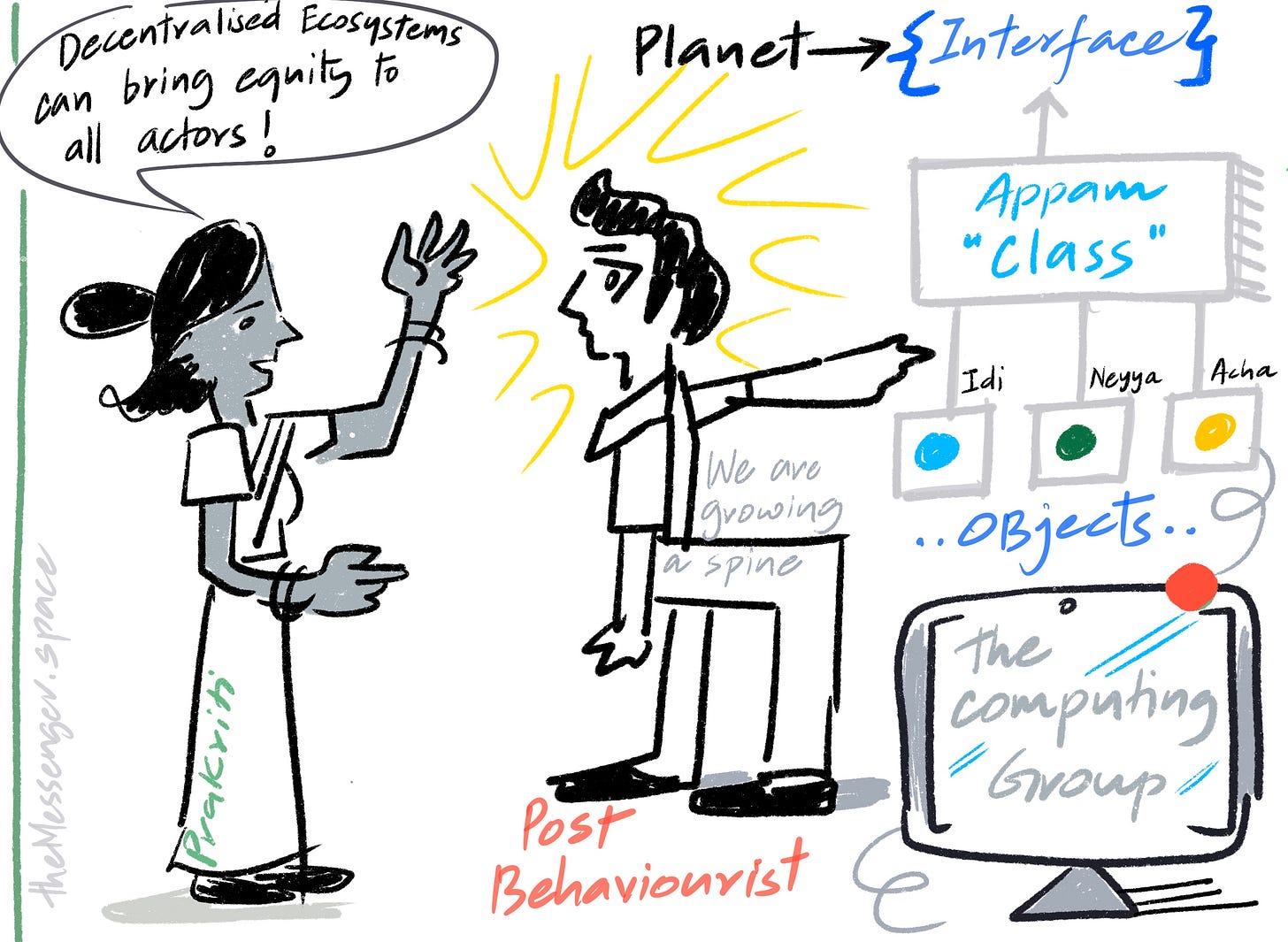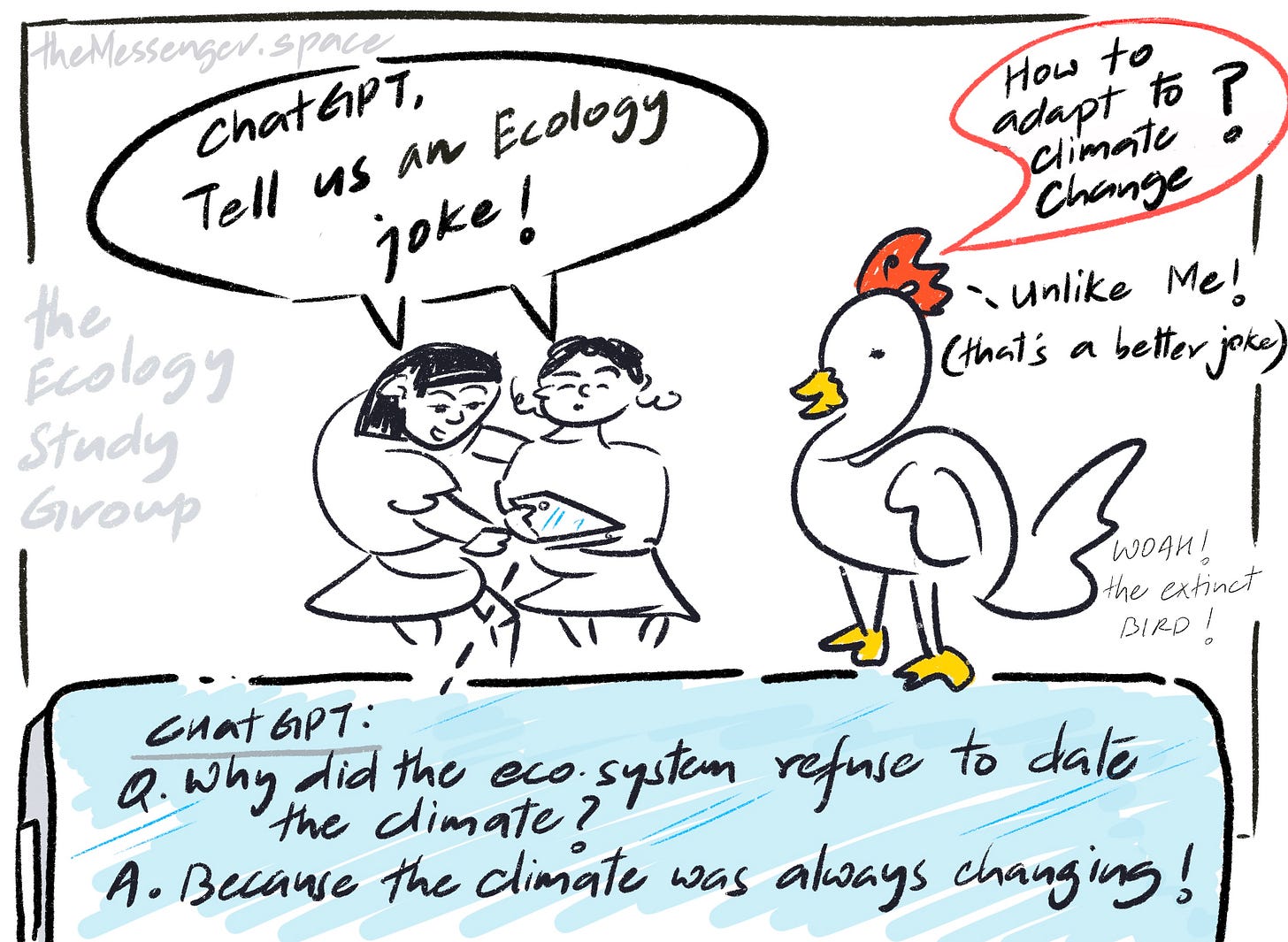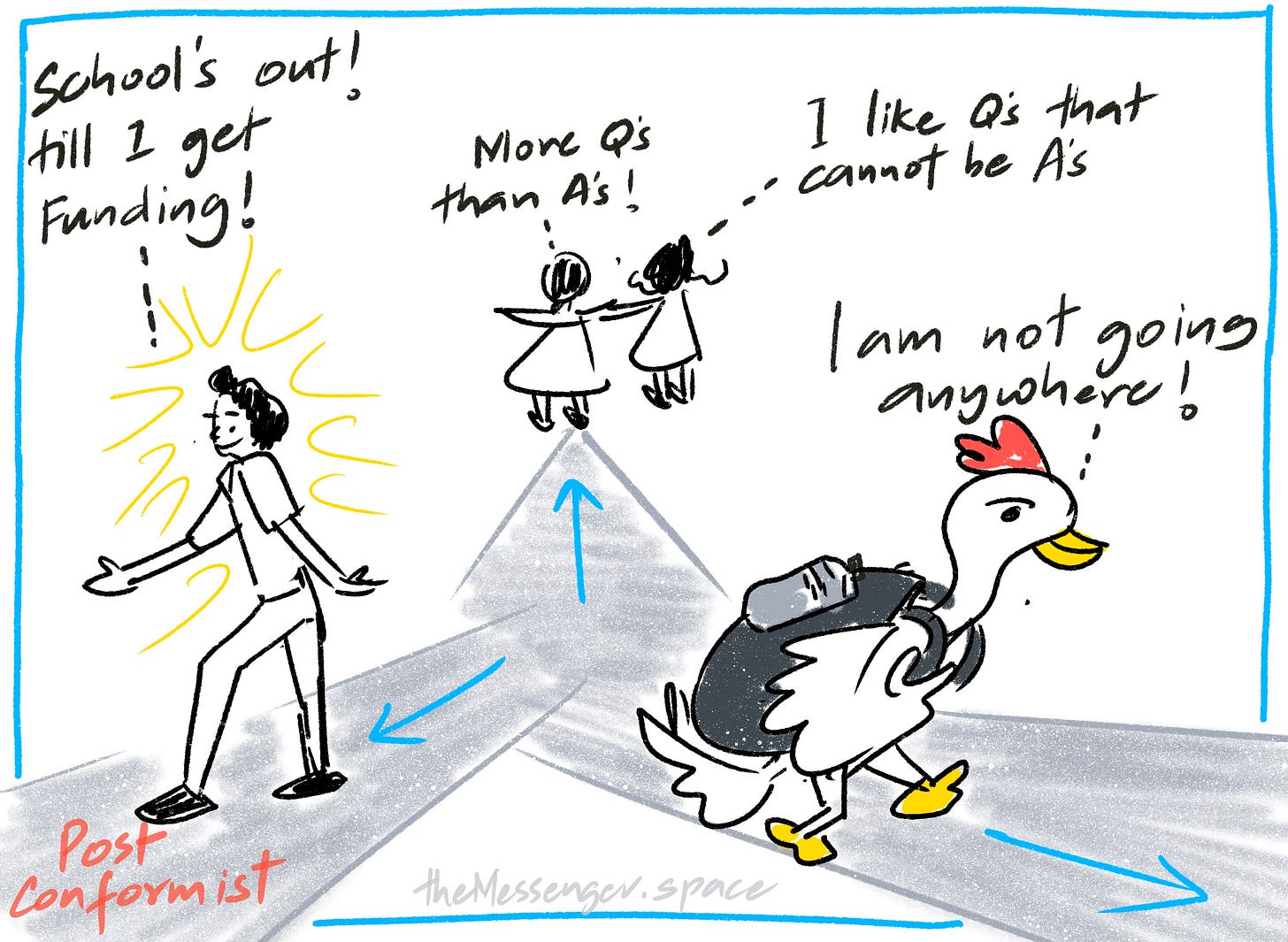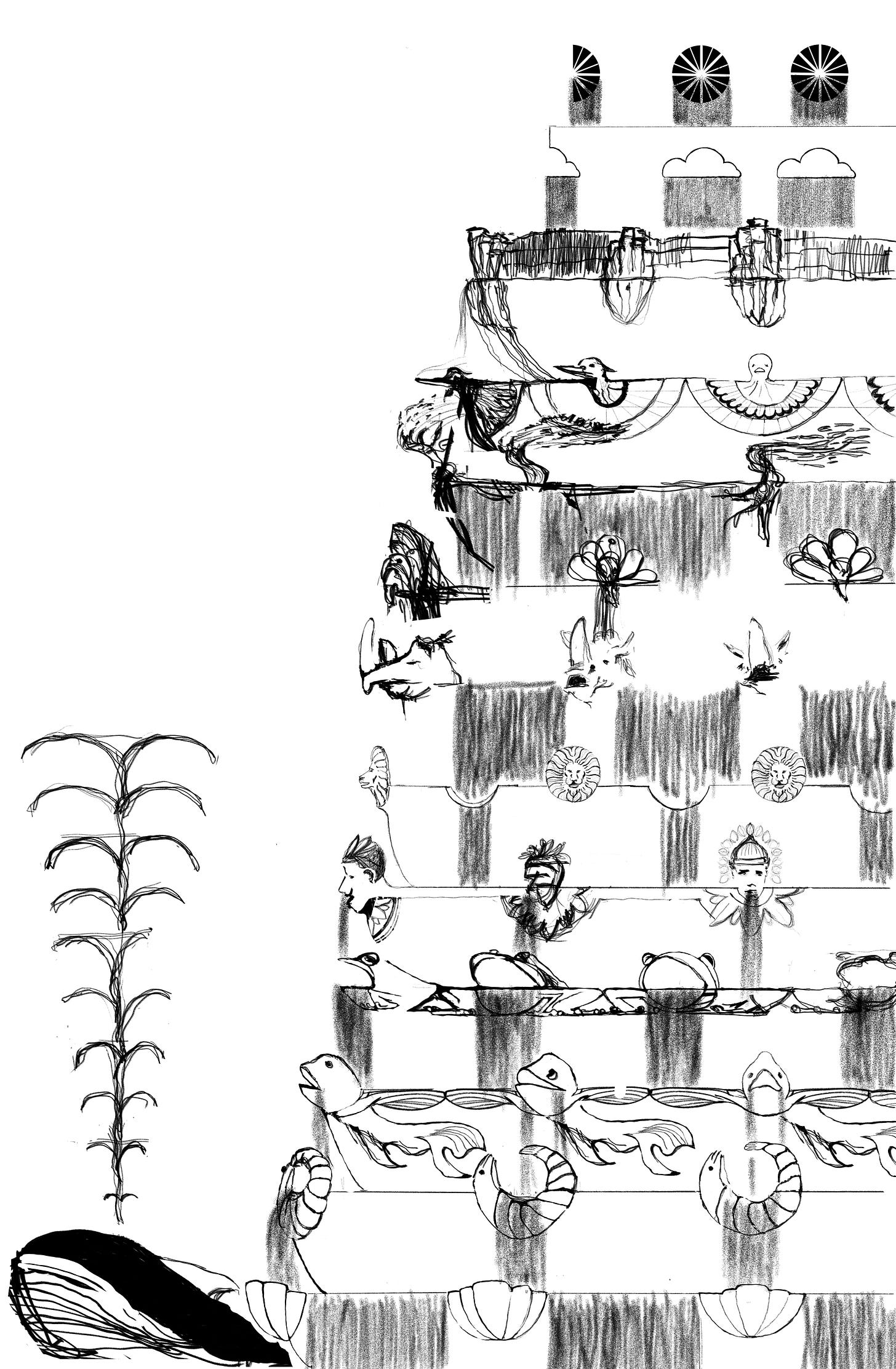Ecosystem Metaphors
Every era has its stock of intuitions and metaphors. When machines and factories were the next new thing, we made movies about the inhumanity of the assembly line.
That was then. What about now? Looking at the world from a distance, there are two new sources of organizational metaphors:
Computing
Ecology
Most people carry a computer in their pocket. Every time you read about the unveiling of My_Favourite_Policy 2.0, you know someone has been up watching Silicon Valley reruns. Tech companies are the most valuable companies in the world and their view of the world influences everyone else.
Ecology is not far behind: the ongoing tragedy of ecological collapse, climate change and environmental distress inserts itself into everyday conversation. We constantly hear about how nature does it better when left to itself. You might have heard about biomimicry, i.e., humans copying nature to solve design challenges. The ecosystem approach to wicked problems is an example of biomimicry.
What is biomimicry applied to organizational design?
Answer: ecosystems
Why design ecosystems in the first place? All of us know of some company or college or government agency that has been damaged by bad leadership. The person on top has an extraordinary influence on a hierarchical organization, for better and for worse. Ecosystems are different: there’s no single person on top, and with distributed leadership comes a measure of robustness - one bad leader doesn’t doom the entire network of organizations.
The Ecosystem of Ecosystems: notes from a convening
A world of corporations spawns firms whose business is to support other firms: law offices, accountants, contractors, staffing agencies, banks and so on. Now imagine a world of ecosystems: don’t you think that world will spawn an ecosystem whose job is to support other ecosystems? Which is to say: an ecosystem of ecosystems.
What does an ecosystem of ecosystem look like? Who belongs to it? Who must it serve?
These are some of the questions that animated a recent get-together in Kochi on the sidelines of a much bigger convening. One morning after a stomach full of aapams and coffee, we sat around a long U-shaped table to discuss the future of the ecosystems approach in a high-ceilinged ballroom converted into a workshop venue. If you strained your ears, you could still hear the music playing from the previous nights festivities. Maybe that’s why we were all ready to dance.
We were still getting to know the term “ecosystem,” let alone understand our role in making ecosystems happen. There was some confusion about roles. For example:
Are we active agents, i.e., an organization that deliberately orchestrates an ecosystem to fulfill their organizational mandate?
Curators, i.e., an organization that selects other members of its ecosystem?
Space-holders, i.e., an organization that hosts a common space for an ecosystem but doesn’t dictate who can enter or exit.
Most of us felt we play more than one of those roles. Sometimes we are advocates, we want the world to be a certain way (that would be 1 above). Sometimes we have no expertise in the problem domain but our tools are of value to those who are - say, farmer organizations inviting a gaming company to help them imagine the future of rain-fed agriculture - this would be 3. Sometimes we know the right people and want them in the room with us (that’s 2).
While these distinctions are valuable, the real work in the room was about creating a sense of community: trust is more important at this stage than outcomes.
Rule number one on the eco-dance floor: you got to trust your partner.
What is this emerging new reality? Are we in this together? If we are, how do we swim in these turbulent new waters?
Parting Thoughts
We left the ballroom with more questions than we arrived with, like: what is an ecosystem organization and how do we create an ecosystem of ecosystem organizations? Here’s an attempt at an answer: an ecosystem player is an organization that performs a key function across ecosystems, just as a law firm will have clients across industries.
Can you give me an example of an ecosystem function? Yeah, sure. Information flow is an ecosystem function, similar to how fungi transport minerals across a wood wide web (it’s a loose comparison - we shouldn’t take the biological analogy literally!). Information flow is tricky when it’s not a matter of company policy - the boss can mandate that every department must share its internals with other departments, but how do you share information across organizations that don’t come under a single hierarchy? Will ecosystem players emerge to play that role? How will they be compensated for doing so?
One answer: make all that information infrastructure public and let it be delivered by the state, like what’s happening with UID in India.
Not a bad idea, but there are obvious concerns about increasing state power in the name of infrastructure provision.
These unanswered questions are why the ecosystem approach is exciting, for we are in the very early stages of ecosystem building. We don’t even agree on what we mean by the term ‘ecosystem’ and have a limited understanding of our role in making ecosystems happen.
What function do we play as ecosystem players. Are we information infrastructure? Are we space holders? That’s the easy part.
The hard part: how does our work make the ecosystem approach itself more viable?
We will have to deal with these problems and more over the coming years, but the mood in Kochi was festive. We left the room with a sense of opportunity, of a new way of organizing ourselves to address social challenges. Development in India and elsewhere is stuck with too many competing interests and not enough adaptability to a world that’s changing by the day. Perhaps ecosystems offer a way forward?
The Gallery of Imaginary Things
Wandering through the dusty roads, the caravan reached the city of Timéy. Beautiful flowers adorn every window. Vibrant laburnums line the narrow streets which lead to the city square. The tall fountain in the city square could dwarf most elegant towers that the caravan came across on the journey. The Khan doesn’t always believe what Marco Polo tells him but he indulges his envoy.













I just read this piece on information flow in systems that goes well with what we are saying: https://two-wrongs.com/hidden-cost-of-heroics.html